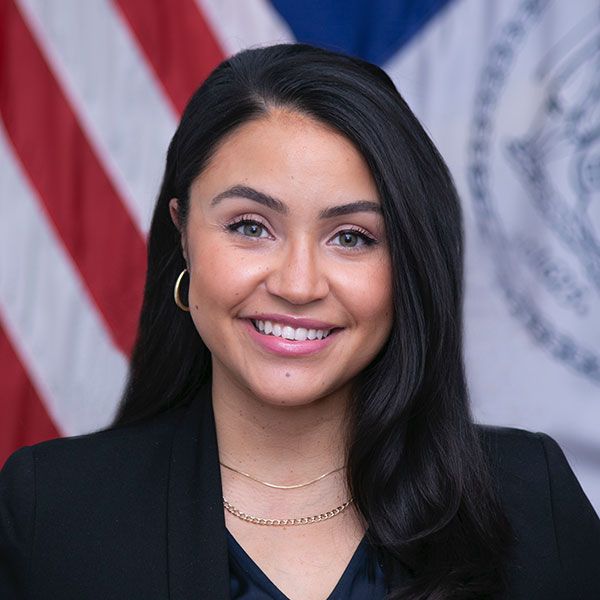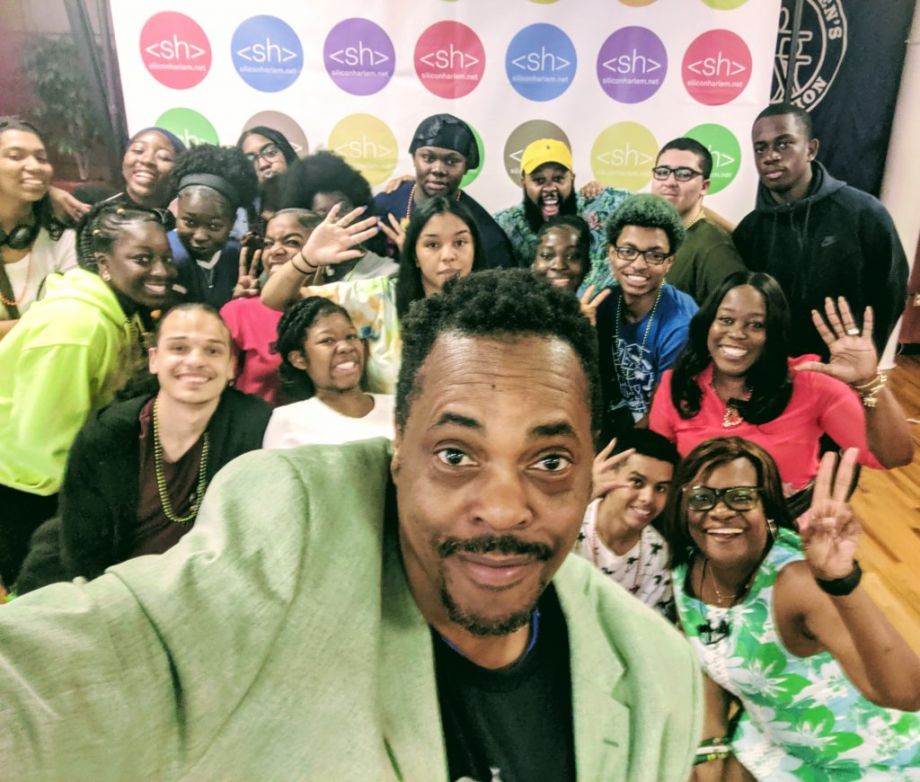Are You A Vanguard? Applications Now Open
Ralston Smith / Unsplash
This is your first of three free stories this month. Become a free or sustaining member to read unlimited articles, webinars and ebooks.
Become A MemberEarly this year, as Jennifer Gutiérrez started her tenure as a New York City council member and chair of its technology committee, she had a question: “What the hell is going on with the Internet Master Plan?”
In January 2020, under former Mayor Bill de Blasio, the city released an ambitious $2.1 billion plan for universal broadband across the city — the first effort of any large U.S. city to strategize delivery of equitable internet access to all its residents. The proposal was to build “neutral host” infrastructure that could be shared by multiple internet operators rather than a single company, increasing competition to the entrenched private companies that had failed to address New York’s digital divide. In forging this infrastructure, the city would provide opportunities for community-based providers to use city-owned property for expanded, affordable service.
But Gutiérrez had not heard any updates since the plan had been announced. “A lot of stuff was put on hold during the pandemic, but the Internet Master Plan should have not been tabled because of the increased need to make internet more accessible and affordable,” Gutiérrez explains. Hearings with the Office of Technology and Innovation — a new agency under current Mayor Eric Adams — in May revealed that the plan was being put on hold and re-evaluated. And then, this September, Mayor Adams announced Big Apple Connect, a partnership with Altice and Charter to bring affordable service to the 300,000 New Yorkers living in public housing.

New York City council member Jennifer Gutierrez is chair of the technology committee.
“The whole idea of the Internet Master Plan is to be as comprehensive as possible,” Gutiérrez says. “With Big Apple Connect it felt like the city didn’t feel the need to revert to this plan or consult with the folks who put it together.”
While Next City’s reporting underscores that the new administration did not consult with the original Internet Master Plan team, it also points to a larger issue. The community-based providers that the city had tapped to help build “neutral host” infrastructure have been left high and dry — in favor of a partnership with two major companies the master plan would have challenged.
“The community providers with boots on the ground, who are really focused on our neighborhood and people, we had the best chance in history to make New York City the greatest city in the world by having everyone connected,” says Clayton Banks, president of Silicon Harlem, one of those providers. “Big Apple Connect falls short in so many ways.”
Prior to the pandemic, nearly a third of New York City households did not have a broadband internet connection at home, and over 1.5 million New Yorkers had neither a mobile connection nor home broadband connection. According to a 2022 report by the Community Service Society, the pandemic exacerbated disparities in access to reliable service, which suddenly became a necessity for working and learning.
The Internet Master Plan emerged from the belief that the private sector could not sufficiently address the city’s digital divide. Altice, Charter and Verizon dominate the industry — in many neighborhoods, only one or two of those companies provide service, creating a local monopoly with high prices. Back in 2017 — nine years after Verizon promised to make its high-speed Fios internet service available to every household in New York City — the city sued the company, saying it had failed to keep that pledge.
The Internet Master Plan built upon years of research, data and discussion on how to change course. “It took into account equity, competition and would have created tons of jobs by bringing future-ready infrastructure into neighborhoods that needed it,” says Greta Byrum, a digital equity expert who worked on the plan. “This was a very forward-looking plan that treated the need for digital equity, and increased broadband services, as an opportunity and place to build.”
One of the key players in doing that would be community-based and smaller internet providers. Between June 2020 and July 2021, the city brought on six vendors, many led by women and people of color, to begin installing low-cost connectivity options at public housing buildings. That group included Silicon Harlem, the clean-tech startup BlocPower and the volunteer-led, community-owned network NYC Mesh.
By the end of 2021, the vendors serviced 40,000 residents across 18 public housing developments. Some felt more could be done. “For the amount of effort put in, and the amount of money on the table, it hasn’t got that many people connected,” a NYC Mesh rep told Next City that November.
Vendors started talking with other city agencies to identify buildings and expand service. NYC Mesh started a partnership with NYC Health + Hospitals with the idea to install at Harlem Hospital. Others were in talks with the Department of Education.

Clayton Banks is head of Silicon Harlem.
Banks, who co-founded Silicon Harlem nearly a decade ago, thinks these early partnerships between community providers and city agencies were “the right way” to kick off the plan. “In our talks and conversations with the city, we were identifying over 160 buildings that we wanted to serve,” he says. But the city never developed a universal, streamlined process for vendors to work with city agencies, which slowed down the process. And the budget to support community providers never materialized. “The city put over $160 million in the budget to make this happen,” Banks says, “But not a nickel of it was spent. The challenge we had, that there were no resources, really slowed down the process.”
These on-the-ground challenges were coupled with the larger, more existential challenge of the city breaking its reliance on privately-owned broadband infrastructure. By building public “neutral host” infrastructure, the community providers could dramatically expand their reach.
But it proved daunting to build public infrastructure after relying on private companies who have no obligation to share their resources. When companies like Verizon install fiber-optic networks throughout the city, they own that network and have it all to themselves; while anti-monopoly regulations require telephone providers to sell access to their networks, those regulations don’t include the internet. “In meetings with the city, it became clear that the city was still grappling with this idea of having a city-owned fiber backbone,” explains Marg Suarez, an NYC Mesh volunteer.
These challenges put the Internet Master Plan in a vulnerable place at the start of 2022, when Mayor Adams took office. “We ran out of time,” Banks says simply. “And now it feels like this plan was ripped away from us.”
The newly-established NYC Office of Technology and Innovation (OTI) didn’t respond to several requests for comment. During a City Council hearing in May, chief technology officer Matthew Fraser said the Internet Master Plan was “under review” to ensure it didn’t call for new broadband infrastructure in places where it was already present. “Let’s make sure that, before we sign on this, we know where everything is going and that it’s in the city’s best interest,” he told council members.
This September, OTI announced Big Apple Connect in anticipation of another hearing about the Internet Master Plan. “OTI was not able to provide details on any other short-, medium-, or long-term plans to connect New Yorkers to the internet beyond the Big Apple Connect program, announced the morning of the hearing,” council member Gutiérrez said in a public statement following the announcement. She also expressed concern about the reduced scope of Big Apple Connect, a three-year initiative that will not cover all the public housing buildings: “We need a robust roadmap, not pop-up programs.”
For many proponents of the Internet Master Plan, things came into focus after the city announced it would partner with Altice and Charter — and no community providers — to implement Big Apple Connect. “The Internet Master Plan absolutely was a threat to these companies,” Byrum says. “I don’t think Big Apple Connect was driven by the city, I think it was driven by those incumbents,” Banks echoes.
Prashanth Vijay, founder of Flume, another company tapped for the Internet Master Plan, wrote that “partnering with them to fix the digital divide is like partnering with Big Oil to solve for climate change.” Altice and Chater, he said, “are largely responsible for creating the schism by holding fiber connections hostage through exclusivity clauses in contracts with local governments.”
Big Apple Connect will provide government subsidies to Altice, which has a current net worth of $3 billion, and Charter, which boasts a net worth of $59 billion. “In the case of NYC Mesh, we’re mostly volunteers,” Suarez says. NYC Mesh is now unsure of the fate of its current installations at public housing buildings, and considers the NYC Health and Hospitals partnership dissolved.
“It’s a big question for NYC Mesh to grapple with, as far as priorities and strategies go,” Suarez continues. “We have limited resources … we’ve already lost many volunteer hours.”
“We’ve been doing the work on our own dime,” Banks says of Silicon Harlem’s installations at public housing buildings. By the end of this year, Silicon Harlem will provide service to three housing developments. But the city hasn’t explained how existing service by community providers for public housing residents will be impacted by the incoming service from Altice and Charter.
Starry, another small provider part of the city’s original group, cut half its workforce and canceled a plan for expansion last month. The company declined an interview, and haven’t publicly connected the layoffs to the abandonment of the master plan. But a source familiar with the matter tells Next City, “I do think they made a big bet [with the Internet Master Plan] and basically lost.”
To top it off, sources point out that by abandoning the Internet Master Plan the city is likely to lose out on federal funding from the $1.2 trillion Infrastructure Investment and Jobs Act, which allocates $65 billion to increase broadband access and will prioritize under-connected communities.
“The Internet Master Plan would have positioned the city really well to be a recipient of these funds,” says Byrum. “And now, with Big Apple Connect, there’s no sustainability in place, no connection to long-term economic development. It’s simply a way to double-down on the old, privately owned infrastructure that’s already there.”
It’s an unfortunate end for a plan that positioned itself as the first effort of a big U.S. city to strategize delivery of equitable internet access to all its residents. “Other cities will be looking at us now, and they might think the best way to address digital equity is the Big Apple Connect approach, and that’s not the message we want the country to see,” Banks says.
He and Byrum both say that the Internet Master Plan can still serve as a detailed roadmap for cities ready to invest in community providers and public infrastructure. Learning from New York’s mistakes, a vision like this can only be successful with significant funding and resources dedicated to community providers, alongside a commitment to challenge the entrenched providers who will work to shut competitors out.
“A plan must be in favor of the people, not the providers,” Banks says.
This story has been updated to correct a misspelling of Byrum’s name.

Emily Nonko is a social justice and solutions-oriented reporter based in Brooklyn, New York. She covers a range of topics for Next City, including arts and culture, housing, movement building and transit.
Follow Emily .(JavaScript must be enabled to view this email address)

20th Anniversary Solutions of the Year magazine